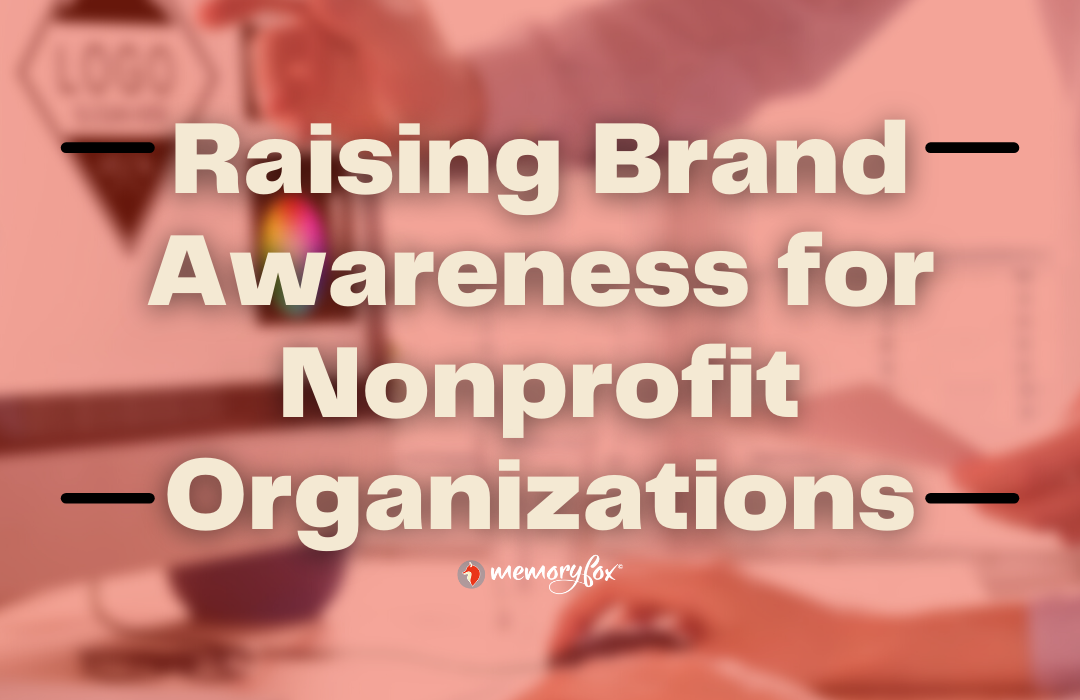Raising Brand Awareness for Nonprofit Organizations

Raising brand awareness isn’t just for large, for-profit businesses; nonprofit organizations can reap the benefits of branding strategies. In fact, building a nonprofit branding strategy should be an integral part of a nonprofit’s overall marketing and business goals.
What is Brand Awareness?
For nonprofits, brand awareness simply refers to how familiar others outside of your organization are with your services. High brand awareness means that more people know about your organization and its services, while low brand awareness means that people are otherwise unaware of your organization or its services.
Brand awareness is established through digital and print marketing strategies, as well as advertising campaigns. These strategic marketing initiatives not only raise awareness of an organization and its products or services, but also builds public trust in the organization, product, or service.
Why is Raising Brand Awareness for Nonprofit Organizations Important?
Brand awareness is important for nonprofit organizations to better serve their communities, raise more money by engaging more potential donors, and establishing trust amongst the communities that they serve. Strong brand awareness helps an organization shape the way their messages are received by their communities to ensure they are universally understood across various demographics.
The ultimate goal of the nonprofit brand strategy is to be the go-to organization for a particular service. In for-profit businesses, brand awareness is an organizational strategy to distinguish themselves, their products, or their services from their competitors. Nonprofit organizations can also utilize brand strategies to distinguish their services and maintain a strong presence in their communities.
Case Example: Habitat for Humanity
Chances are, you have a pretty good idea about what Habitat for Humanity does without having to do a Google search. That’s because Habitat for Humanity has high brand awareness and implements successful marketing and advertising campaigns. In fact, Habitat for Humanity was even named the “Brand of the Year” in the social services ad nonprofit category in 2016. Additionally, Habitat for Humanity was crowed the “Most Loved” and “Most Trusted” brand in that category.
Habitat for Humanity has a strong online and community presence that clearly showcases their mission of building homes, strengthening families with financial support and education, and developing communities. They use a consistent color and font scheme in their digital and social messages, and have a clear “voice” when addressing their audience. Habitat for Humanities’ brand strategy is streamlined and consistent across each of its individual subsidiaries in communities across the globe. This strong brand presence will create the same image and trust in their organization and services in a small town in Colorado and in a big city in Europe. In short, Habitat for Humanity maintains control of how their organization is perceived by the public.
How to Create a Nonprofit Branding Strategy
Now that we’ve made our case for a strong brand presence for both small and large nonprofit organizations, we’ve compiled a simple guide to help you establish a brand strategy that can be easily implemented into your existing marketing strategy.
1. Start with Your Organization’s Mission
In order to align all outbound messaging, your organization needs a foundation to drive it all. Ask yourself questions such as these to lay the groundwork:
-
What is the core mission of your organization?
-
What do you want the public to know about your organization?
-
How do you want your community to feel or think about your organization and its services?
2. Develop Marketing Messaging to Align with Organizational Goals
This becomes the framework for your brand strategy. Write out sample messages to serve as examples of your organizations “voice,” and make sure that these are aligned with your answers from the questions above and your organization’s operational goals. Then create rules or guidelines for how to use this specific messaging to make sure that everyone within your organization is using the brand strategy properly and consistently. Remember, consistency is key in brand strategy.
3. Design Your Organization’s Visual Identity
Depending on the size of your organization, this may already be done or cannot be altered. The goal for this step is to make sure that the visual appearance of your organization’s brand, meaning the logo, font choices, colors, and image guidelines, align with how you want your organization to be represented to and received by the public.
To determine if anything within your brand’s visual identity needs to change, or is not aligned with how you want to be perceived based on your questions in Step 1, it is often best to conduct a focus group or distribute a survey. A focus group or survey can help determine if your organization’s mission and public appearance are misaligned, and can help you slightly alter it to better align with your operational goals. You can even bring in alterations to your brand’s visual identity to the focus group or survey in the form of A/B testing to determine if a new brand strategy would be more successful than the existing one.
4. Build a Branding Guide for Internal Use
Now that you have established your organization’s brand messaging and visual identity, you need to compile them into a comprehensive guide for your internal staff and volunteers to use. Your branding guide will help keep everyone in your organization on the same page, and therefore maintain consistency in all outbound marketing and communications.
The branding guide for your nonprofit organization can be as small as a one-page flyer or brochure. Make sure it includes the following information from Steps 1-3:
-
Your organization’s mission that drives your marketing and brand strategies
-
Logo samples and descriptions of each use (if there are multiple iterations of the logo)
-
Color codes (RBG, Hex, etc.) and rules for using different brand colors
-
Typography or font usage, with guidelines for using each of them if your organization uses more than one font
-
Sample messages and tones of voice
-
Sample images or instructions for sourcing images for outbound communications
5. Create a Content Plan to Execute Your Brand Strategy
Creating a content plan will help you map out when certain messaging should go out and to which platforms. Additionally, this will help execute various marketing campaigns that your organization may have to push your operational and philanthropic goals forward.
In your content plan, be sure to highlight the impact that your organization has on the community. The easiest way to do this is by promoting stories from your beneficiaries in the form of user-generated content, as it can help your organization build credibility to those who are unfamiliar with your services. Demonstrated impact will not only help build trust in your brand to your audience, but also showcase your organization as the expert in that particular area of service.
Bonus: Check out our complete guide to creating a marketing strategy for your nonprofit organization!
Raising awareness of your organization’s brand and services does not have to be a completely separate job from your existing marketing and organizational strategies. In fact, branding should be the central component that drives both strategies, as it controls how your community perceives your organization and its services.
Want other nonprofit marketing resources like this branding guide sent straight to your inbox? Sign up for our monthly newsletter!




